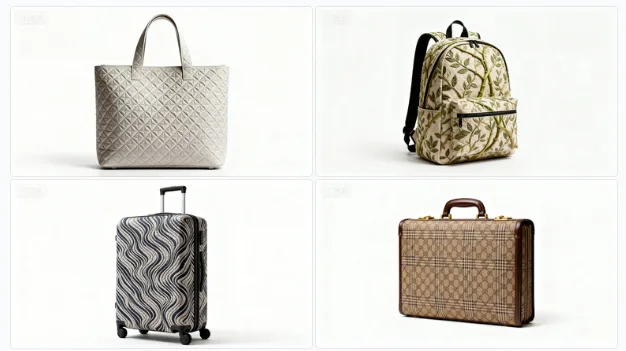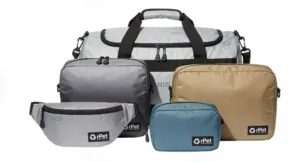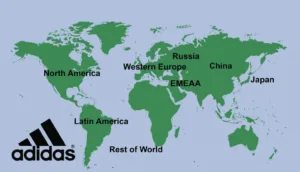Jacquard fabric is a type of woven fabric distinguished by its intricate patterns woven directly into the material rather than printed or embroidered on the surface. Named after Joseph Marie Jacquard, the inventor of the revolutionary Jacquard loom in the early 19th century, this fabric marked a turning point in textile manufacturing by enabling complex designs to be produced with precision and consistency.
Today, Jacquard fabric is prized for its durability, texture, and elegant appearance, making it a favorite choice across multiple industries—from fashion and upholstery to custom bag materials. Its versatility allows designers and manufacturers to create distinctive products that combine visual depth with functional strength. Whether used for luxury handbags, travel luggage, or decorative home furnishings, Jacquard continues to embody a perfect balance between artistry and craftsmanship.
Contents
What Is Jacquard Fabric and Why It Was Invented
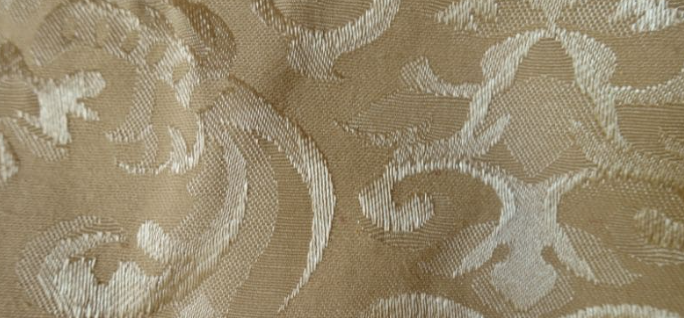
When we talk about innovations that transformed the textile world, Jacquard fabric stands as one of the most revolutionary. Today, it is widely used in fashion, upholstery, and bag manufacturing, appreciated for its intricate woven designs and durable structure. But to truly understand what is a Jacquard fabric, we must go back to the early 19th century — an era of rapid industrial change and growing demand for automation in textile manufacturing.
1. The Origins of Jacquard Fabric
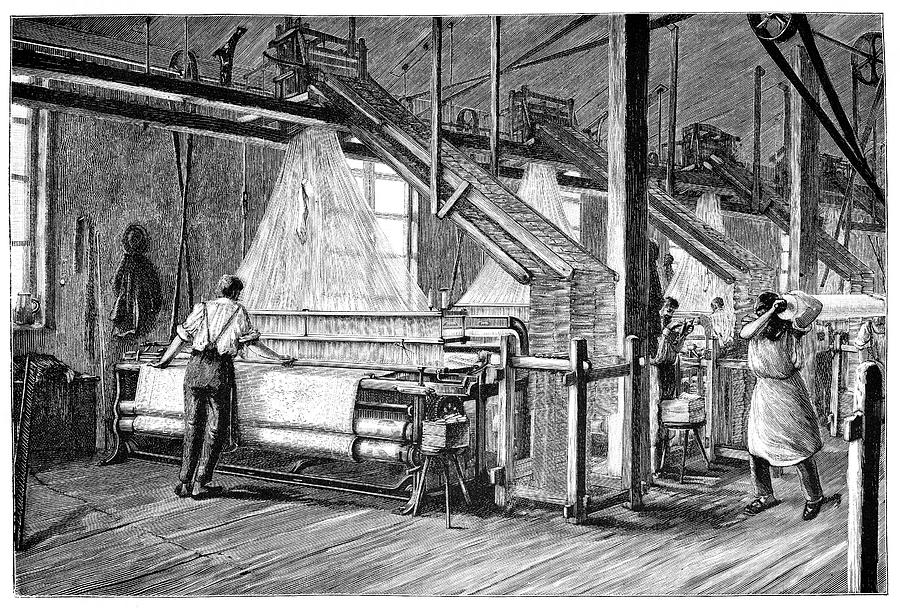
Before the invention of the Jacquard loom, fabric design was limited by the constraints of manual weaving. Artisans could create simple stripes or checks, but detailed floral or geometric motifs required painstaking hand manipulation of threads — a slow and costly process reserved for luxury items like brocade and damask.
This changed in 1804, when Joseph Marie Jacquard, a French inventor, developed a revolutionary loom attachment that used punched cards to control the lifting of individual warp threads. This innovation allowed weavers to automatically produce complex woven designs without manual intervention. It was essentially the world’s first programmable machine — a precursor to modern computing — and the foundation of Jacquard weaving as we know it today.
2. How Jacquard Weaving Works
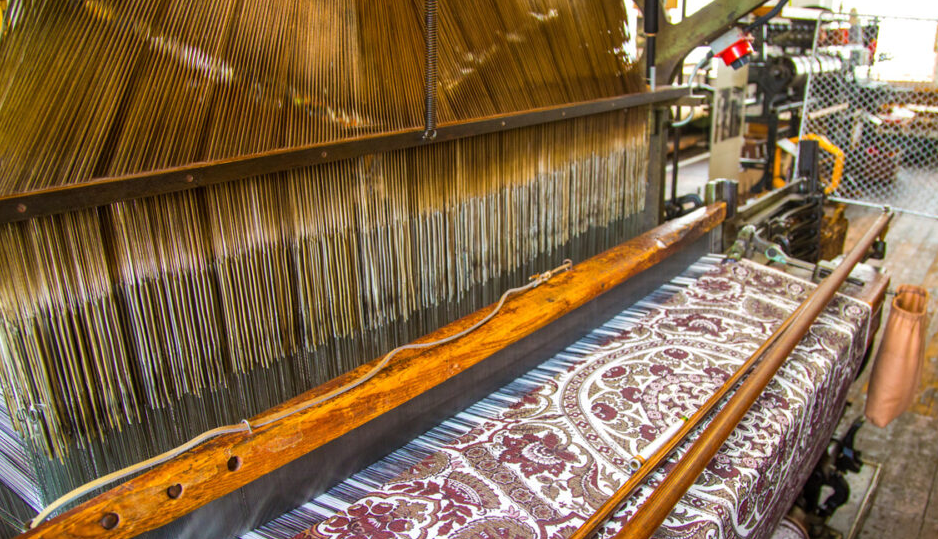
Unlike standard woven fabrics where all warp threads move together, Jacquard woven fabric allows each thread to move independently, creating intricate and durable patterns that are part of the fabric itself, not printed or embroidered on the surface. This process results in a patterned fabric with a rich texture and luxurious depth, often used for high-end applications such as Jacquard upholstery fabric, floral Jacquard fabric, and Jacquard fabric dresses.
The technique can be applied to various fibers — cotton Jacquard fabric offers comfort and breathability, silk Jacquard fabric brings elegance and sheen, and synthetic versions like polyester or blends add strength and wrinkle resistance. Many modern manufacturers even experiment with Jacquard fabric paint and Jacquard textile fabric paint to enhance color effects and surface finishes, combining traditional weaving with modern creativity.
3. Why Jacquard Fabric Became Essential
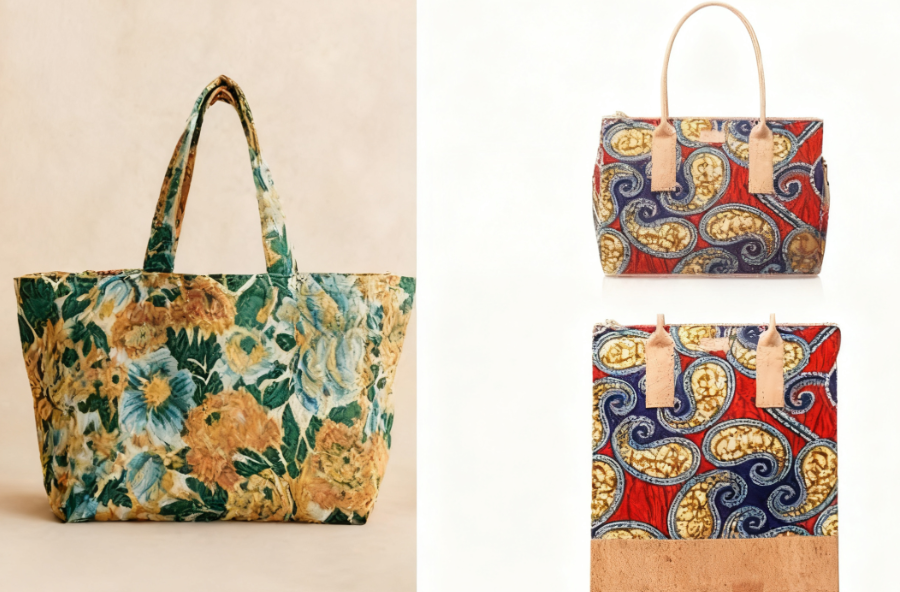
The invention of the Jacquard loom answered the growing need for efficiency, customization, and beauty in textiles. For centuries, woven decoration symbolized luxury and craftsmanship, but it was difficult to scale. Jacquard technology solved this by allowing mass production of complex designs — making artistic fabrics accessible to both manufacturers and consumers.
For brands today, Jacquard fabrics represent more than just material — they are a storytelling tool. The ability to integrate logos, monograms, or distinctive textures directly into the weave gives fashion houses, bag manufacturers, and upholstery producers a way to express brand identity with sophistication and permanence.
In short, Jacquard fabric was invented to merge creativity with industrial capability — to make complex beauty repeatable, and luxury scalable. From silk draperies in 19th-century Europe to custom bag materials in modern OEM leather bag production, it remains a timeless blend of artistry, technology, and manufacturing excellence.
What Are the Key Properties of Jacquard Fabric?
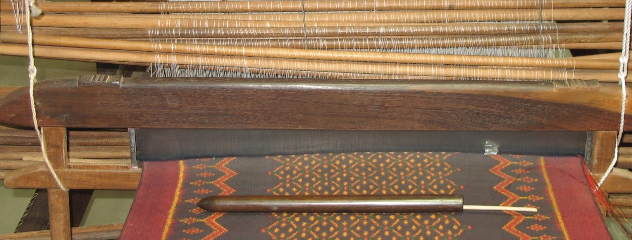
Jacquard fabric stands out for its exceptional combination of strength, visual depth, and versatility. The advanced weaving process gives it qualities that make it suitable for everything from luxury fashion to upholstery and travel accessories. Below are the core properties that define the value of Jacquard in modern textile design and manufacturing.
1. Durability and Strength
One of the defining characteristics of Jacquard fabric is its durability. The tightly interwoven structure resists tearing and abrasion, making it ideal for products that require long-lasting performance—such as luggage, uniforms, and home upholstery. Compared to printed textiles, Jacquard woven fabric maintains its design even after years of use, since the pattern is part of the weave itself rather than a surface decoration. This makes it a truly high-strength textile suitable for demanding industrial and fashion applications.
2. Visual Texture and Aesthetic Appeal
Jacquard weaving allows designers to achieve intricate motifs and a sense of three-dimensional texture that elevate any product’s appearance. Whether creating floral Jacquard fabric for dresses or black Jacquard fabric for premium handbags, this material delivers both elegance and sophistication. The tactile richness and depth make it a preferred luxury fabric for travel bags, accessories, and high-end apparel. Its decorative weave reflects not only technical skill but also artistic expression, turning functional products into statement pieces.
3. Versatility in Patterns and Colors
The true beauty of Jacquard lies in its limitless design potential. Brands can incorporate their logos, monograms, or signature motifs directly into the fabric, offering distinctive identity and high perceived value. Through pattern customization, manufacturers can produce fabrics with various yarn types, colors, and textures—from cotton Jacquard fabric for natural comfort to shimmering silk Jacquard fabric for luxury appeal. This versatility makes Jacquard a perfect choice for OEM/ODM partners seeking to develop unique collections across fashion, travel, and home décor.
4. Breathability and Comfort
While Jacquard is known for strength and structure, its comfort should not be overlooked. When made with natural fibers such as cotton or silk, Jacquard fabrics provide excellent breathability, keeping the user cool and comfortable. These qualities make it a reliable breathable fabric for apparel and accessories that balance aesthetics with wearability. Even in heavier applications like upholstery, the intricate weave allows air circulation, enhancing user comfort and reducing heat buildup.
5. Easy Maintenance and Longevity
Another reason manufacturers prefer Jacquard is its low-maintenance nature. The patterns don’t fade easily, and the structure resists wrinkles and deformation. Whether used for the US’s Jacquard upholstery fabric in interiors or for Jacquard fabric material in luggage and handbags, it retains its beauty and integrity over time. This makes it a long-lasting material and a sustainable choice for brands that prioritize both performance and aesthetics. With modern finishing techniques and Jacquard textile fabric paint options, it’s even possible to enhance color fastness and surface protection without compromising texture.
Where Is Jacquard Fabric Commonly Used?
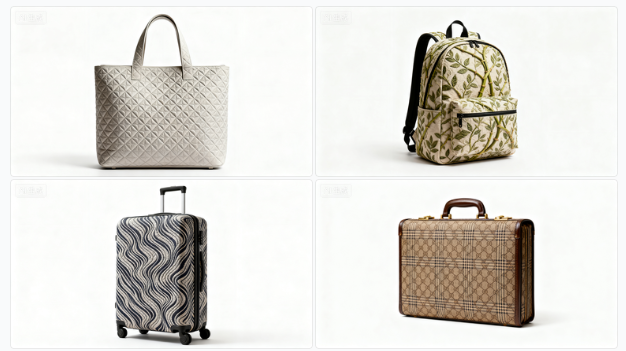
Since its invention in the early 19th century, Jacquard fabric has revolutionized the textile industry by combining intricate woven artistry with functional durability. Originally used in luxury fashion, it has gradually expanded into home décor, furniture upholstery, and bag manufacturing, making it one of the most versatile jacquard woven fabrics in modern design.
The evolution of Jacquard applications can be divided into three major phases, each shaped by material innovation, aesthetic trends, and advances in textile manufacturing.
1. From Haute Couture to Everyday Fashion
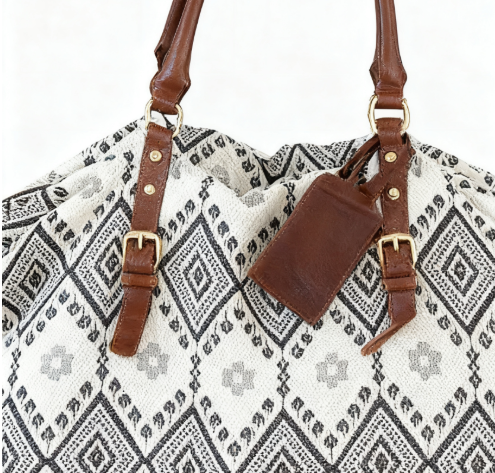
Period: 19th–Mid 20th Century
In its early years, Jacquard fabric—often made from silk jacquard fabric or cotton jacquard fabric—was synonymous with opulence and craftsmanship. The intricate woven patterns created a three-dimensional texture, making it a favorite among haute couture designers.
Main Applications:
- Evening gowns & dresses: The embossed texture of jacquard fabric dress materials offered elegance and depth.
- Suits & jackets: The firm, structured weave provided shape retention for tailored pieces.
- Brocade and patterned fabrics: Represented the fusion of European luxury and traditional craftsmanship.
Industry Significance: Jacquard became a symbol of prestige, linking traditional weaving artistry with modern fashion innovation.
Keywords: jacquard fabric, silk jacquard fabric, jacquard brocade fabric, jacquard woven fabric, jacquard fabric dress
2. Expansion into Upholstery and Home Décor
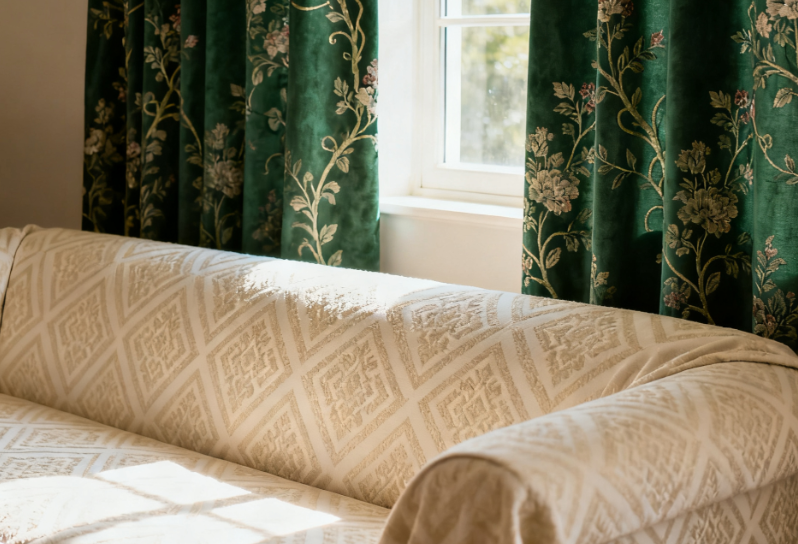
Period: Mid 20th Century – Early 21st Century
As jacquard textile fabric production became more efficient, its use expanded beyond apparel to the home textile and decorative upholstery industries. Its dense weave and visually rich texture made it ideal for both functional and aesthetic purposes.
Main Applications:
- Curtains and drapes: Offering both light control and elegant patterning.
- Sofas and cushions: Jacquard upholstery fabric and floral jacquard fabric brought luxury to living spaces.
- Tablecloths and bed covers: Known for durability, wrinkle resistance, and easy maintenance.
Industry Significance: Jacquard became a standard choice for interior designers and hospitality brands seeking premium, long-lasting textiles.
Keywords: jacquard upholstery fabric, jacquard textile fabric, floral jacquard fabric, cotton jacquard fabric, jacquard woven fabric
3. Modern Applications in Bags and Accessories

Period: 21st Century – Present
Today, Jacquard fabric plays an essential role in the accessories and travel goods sector. It provides structural integrity, pattern customization, and brand identity—all crucial for OEM/ODM bag manufacturing.
Main Applications:
- Travel bags & luggage: High-density jacquard woven fabric enhances tear resistance and surface protection.
- Tote bags & wallets: Ideal for custom logos and brand-specific patterns.
- Luxury accessories: Combines refined texture with lightweight durability.
Sunteam Example:
At Sunteam, our manufacturing team integrates jacquard fabric into travel bag collections to create durable, stylish, and eco-conscious designs. With advanced OEM/ODM bag manufacturing capabilities, we transform woven artistry into functional, market-ready products for global brands.
Keywords: jacquard fabric, jacquard bag fabric, jacquard woven fabric, OEM bag manufacturer, cotton jacquard fabric
Jacquard Evolution Summary
| Period | Key Innovation | Major Applications | Industry Impact |
|---|---|---|---|
| 19th–20th Century | Silk and cotton jacquard weaving | Haute couture, dresses, suits | Symbol of craftsmanship and luxury |
| Mid 20th–21st Century | Mechanized jacquard looms | Home décor, upholstery fabrics | Durable and decorative for interiors |
| 21st Century–Now | Custom OEM/ODM leather bag production | Bags, accessories, travel goods | Combines aesthetics with functionality |
Conclusion
Jacquard fabric stands as one of the most remarkable achievements in textile design—uniting craftsmanship, technology, and versatility. Its intricate woven structure not only delivers durability and dimensional beauty but also offers endless opportunities for creative expression. From fashion apparel and home décor to travel bags and luxury accessories, Jacquard has proven to be a fabric that perfectly balances functionality and aesthetics.
In today’s market, where brands seek differentiation through material innovation and visual identity, Jacquard woven fabric provides a unique advantage. Its ability to incorporate customized patterns, logos, and color combinations makes it a preferred choice for premium and sustainable collections. Whether made from cotton jacquard fabric, silk jacquard fabric, or high-performance blends, it enhances both the tactile experience and the perceived value of a product.
For brands aiming to elevate their product lines with distinctive textures and refined craftsmanship, collaborating with an experienced OEM bag manufacturer like Sunteam can bring your creative ideas to life.
At Sunteam, we integrate Jacquard textile fabric into our OEM/ODM bag production to craft stylish, durable, and eco-conscious designs—helping partners around the world create Jacquard fabric products that truly stand out in the market.

